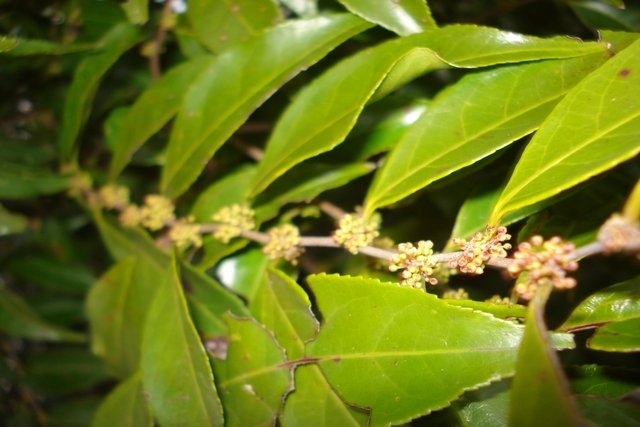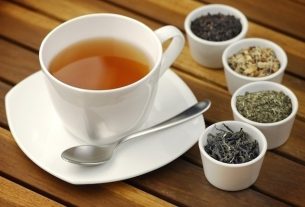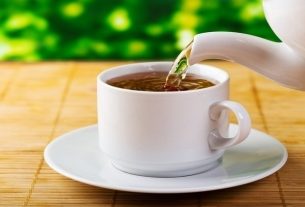Guacatonga is a medicinal plant rich in flavonoids, saponins and alkaloids, bioactive compounds with gastroprotective and anti-inflammatory action, and is widely used in the treatment of bad breath, mouth ulcers, cold sores, stomatitis, gastritis and ulcers.
Furthermore, guaçatonga, also known as guaçatunga, lizard tongue, bugre or cafezinho-do-mato, contains tannins, compounds with healing and antiseptic properties that help with wound healing. Discover other natural healing agents.
Guacatonga is generally found in health food stores and can be used in the form of tinctures, teas and compresses. Furthermore, this plant can also be found in pharmacies, in the form of soaps, gels or creams.

What is it for
Guacatonga is a medicinal plant with healing, anti-inflammatory, antiseptic, antivenom, analgesic and gastroprotective action, being used to complement the treatment of:
- Herpes labialas this plant has healing, antioxidant and analgesic effects;
- Canker sores, gingivitis, stomatitis and bad breathas it has antioxidant, anti-inflammatory and antimicrobial properties;
- Dyspepsia, gastritis and stomach ulcersas it contains sesquiterpene and casearins, bioactive healing compounds that reduce stomach acidity;
- Rheumatismas it has analgesic and anti-inflammatory effects;
- Wounds, ringworm and eczemabecause it has antibacterial, antiseptic and healing activity;
- Cobra bites, as this plant inhibits the action of snake venom on the muscles and nervous system.
Additionally, guaçatonga is also used to help relieve swelling, fever and diarrhea, as it also has diuretic, antipyretic and antispasmodic properties.
How to use
Guacatonga can be used in the form of teas, compresses and tinctures, which are prepared with the fresh or dried leaves of this plant:
- Guaçatonga tea: Boil 1 cup of water and turn off the heat. Afterwards, add 1 dessert spoon (2g) of dried guaçatonga leaves to the water. Cover, let rest for 10 minutes, strain and drink up to 3 cups a day, before main meals;
- Tablet: Boil 500ml of water and, after turning off the heat, add 3 tablespoons (9g) of dried guaçatonga leaves to the water. Cover and let rest for approximately 10 minutes. Strain and apply this infusion, with a piece of cotton or gauze, 2 to 3 times a day at the site of the lesions;
- Dyeing: Dilute 30 to 40 drops in 1 glass of water and drink twice a day, before meals.
In addition, guaçatonga is also used in the manufacture of soaps and creams to help with the wound healing process and in the treatment of cold sores.
Possible side effects
Consuming large amounts of guaçatonga can cause vomiting or diarrhea. This plant should not be used for more than 3 months as it can cause bleeding.
Therefore, it is advisable to use guaçatonga only under the guidance of a doctor or other health professional specialized in the use of medicinal plants.
Who cannot use
The use of guaçatonga is not recommended for pregnant or breastfeeding women. Furthermore, this plant is not recommended for children under 12 years of age.
People who use anticoagulant medications should not use guaçatonga, as this plant can enhance the action of the medication, causing bleeding.
Bibliography
- REGIONAL PHARMACY COUNCIL OF THE STATE OF SÃO PAULO. MEDICINAL PLANTS AND PHYTOTHERAPY. 2019. Available at: <http://www.crfsp.org.br/images/cartilhas/PlantasMedicinais.pdf>. Accessed on September 28, 2022
- SILVA, Rodrigo Adalberto. Casearia sylves tris Sw.: a Brazilian plant of interest to the SUS. Postgraduate completion thesis, 2016. Fundação Oswaldo Cruz: Farmanguinhos.
- STATE OF RIO GRANDE DO SUL: HEALTH SECRETARY. Manual on medicinal plants of the Intersectoral Policy on Medicinal Plants and Phytotherapeutics of Rio Grande do Sul. 2021. Available at: <https://saude.rs.gov.br/upload/arquivos/202112/23154715-cartilha-das-pm-da-pipmf-projeto-aplpmfito-rs-2021.pdf>. Accessed on September 28, 2022
- FEDERAL UNIVERSITY OF SANTA MARIA. Native medicinal plants of popular use in Rio Grande do Sul. 2019. Available at: <https://www.ufsm.br/app/uploads/sites/346/2019/12/Cartilha-Plantas-Medicinais.pdf>. Accessed on September 28, 2022
- NATIONAL HEALTH SURVEILLANCE AGENCY – ANVISA. Phytotherapeutic form: Brazilian pharmacopoeia 2nd edition. 2021. Available at: <https://www.gov.br/anvisa/pt-br/assuntos/farmacopeia/formulario-fitoterapico/arquivos/2021-fffb2-final-c-capa2.pdf>. Accessed on September 28, 2022

Sign up for our newsletter and stay up to date with exclusive news
that can transform your routine!
Warning: Undefined array key "title" in /home/storelat/public_html/wp-content/plugins/link-whisper-premium/templates/frontend/related-posts.php on line 12
Warning: Undefined array key "title_tag" in /home/storelat/public_html/wp-content/plugins/link-whisper-premium/templates/frontend/related-posts.php on line 13



